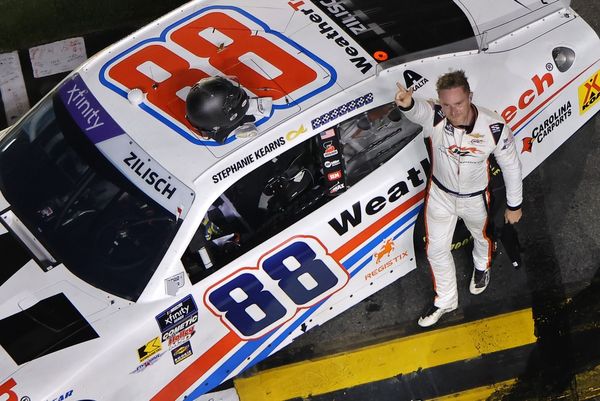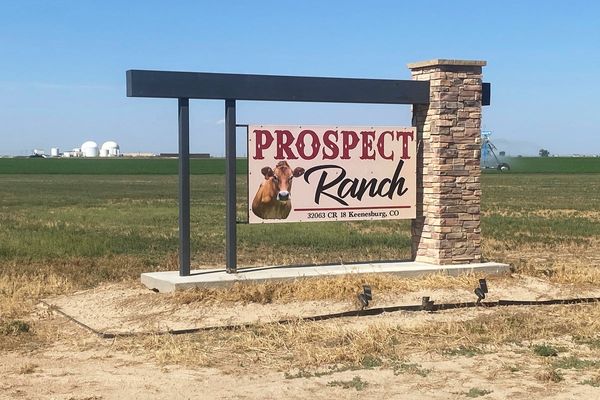
It was only after Julia Gillard invited him to review the funding of Australia’s schools in 2010 that David Gonski realised how much education had transformed his own life. “I remember sitting with Ken Boston and, I suspect, Kathryn Greiner, in a subcommittee we were planning. And it suddenly hit me – it was like a bolt out of the blue – that my father was educationally disadvantaged,” Gonski recalls almost a decade later. “I hadn’t thought that through before because my dad was a brain surgeon. And so I started to talk to my mother – my father was already dead – and it all came to me so clearly.”
David Gonski’s grandparents were dirt-poor migrants from eastern Europe, who arrived in South Africa with little money and even less English. Their son, Gonski’s father, was an extremely bright child, but it was only the assistance of philanthropic scholarships that enabled him to continue studies beyond school, eventually completing a degree in medicine. When David was still a boy, his parents left South Africa for Australia, where he would rise to become one of the country’s leading businessmen, a famed networker among Sydney’s rich and powerful, and a noted patron of the arts and philanthropist in his own right.
“Ultimately what happened because of that beneficence was that my father became a brain surgeon, and I had a great life,” Gonski reflects. “I had never focused on my dear dad until we started talking about this. And then I realised, actually this was the destiny of the review.”
One morning in early 2011, in the course of conducting the school funding review that would bear his name, Gonski left his Point Piper home to visit two primary schools, Villawood North Public school and Sacred Heart school, in Sydney’s west. Upon arriving at the first school, he discovered the principal dealing with broken glass from a break-in the night before. As he sat waiting in the school’s reception, Gonski observed the flow of children arriving for the school day: almost all were, like his father, the children of migrants from non-English-speaking backgrounds; many were from families as poor as his father’s had been.
When the principal had finished dealing with the immediate issues, he and Gonski toured the school, discussing the challenges it faced. “Most of his kids didn’t see a book outside the school,” Gonski recalls to us, his shock still apparent. “ No books!”
“I asked [the principal] the question: ‘what is the relationship between the school and the parents?’ Because I was interested,” Gonski says. “‘What’s the involvement of parents?’” It was a reasonable question and yet, as soon as he asked it, Gonski realised how removed he was from the realities facing this school.
The principal looked at him, smiled and said, “David, my job is to get the kids in here by 9am in the morning. Getting the parents in here at all is almost an impossibility,” adding that 40% of the student roll changed each year and his focus that year was on improving attendance.

Gonski’s next destination was just down the road. He thought he would go on foot, but the principal advised him to drive. “He was just not happy [with my assuming] that it was safe for me to walk – something I’d never thought of in my own city.”
It is possible to imagine Gonski driving away from the school, pondering his father’s story. How likely was it that a child of poor migrants with little English, growing up in these circumstances, would end up becoming a neurosurgeon? A growing body of evidence suggested it was increasingly improbable. Naplan (National Assessment Program – Literacy and Numeracy) results in 2009 showed that Year 9 students in hardscrabble areas of Sydney had poorer literacy and numeracy than Year 5 children in the wealthier parts of town that Gonski was more familiar with.
It seemed that our schools were merely reproducing inequalities that existed outside the school gate – and sometimes making them even worse.
Only a few minutes’ drive away, Sacred Heart school seemed a world away. “I saw just in that morning the difference between the way the schools were operating,” Gonski reflects, almost a decade later. “Every child was perfectly turned out in magnificent school uniforms. I was greeted by a concert, which was a short one – beautiful singing by the kids. The headmaster was in total control of his buildings. They were perfect.”
This school served a quite different group of children from the school down the road. Gonski asked the principal whether he faced the truancy problems experienced at the school he had just come from. “Truancy? I’ve got a waiting list for the school! If we have truancy, I tell the parents to take their kids away.”
David Gonski believed that the opportunity his father had had to transform his lot should be the birthright of every Australian child; that “differences in educational outcomes should not be the result of differences in wealth, income, power or possessions,” in the words of the report that would take his name.
“Even though we were immigrants to this country, my father had a very good profession. He saved lives. I had a lovely life. Why? Because of education.”
And yet that morning in 2011, visiting those two nearby schools in western Sydney, Gonski had witnessed close-up the growing divergence between the responsibilities Australian schools faced and the resources they had to meet them. The Gonski review found that in successful school systems internationally, students were able to achieve their best irrespective of their background or the school they attended. But that was less the case in Australia. The impact of family background on educational outcomes in Australia was much more pronounced than in comparable countries like Canada. And the gap in the learning outcomes between disadvantaged Australian children and their more privileged peers was growing.
In response to these challenges, the Gonski report offered a seemingly compelling solution. First, identify the resourcing enjoyed by those schools where most students were achieving above-minimum national standards. Then, take that as the best guide to the necessary resourcing for a successful education and call it the baseline level of funding which all students should receive.
It would also be necessary to provide additional funding loadings on top of the baseline for those children who experience disadvantages that impede their learning, and for schools in remote or rural locations, or with small student populations, that face higher costs.
Thirdly, set up an architecture to continuously verify and evaluate the calculations underpinning the first two steps.
Implementing Gonski’s resource standard would require a substantial national investment – a 15% increase on current expenditure. Modelling conducted by the review indicated that three-quarters of the additional spending would flow to public schools, reflecting the high levels of social disadvantage in that sector. But where disadvantaged students were enrolled in non-government schools, they too would receive additional resourcing. School funding would be needs-based and sector-blind.
And yet, despite all the optimism generated by the Gonski report and the remarkable consensus that coalesced around it, the problems of Australian education have only worsened since the report was commissioned. International tests show that young Australians are getting less and less out of the education we are providing them.
Underlying the headline averages, we find the same old equity story in which social disadvantage is a powerful predictor of low educational achievement. On average, kids from the poorest quarter of the population are three years of learning behind children in the top quarter. In 2010, Prime Minister Julia Gillard insisted that demography should not determine destiny, but the reality for far too many Australian children in 2022 is that it still does.
Real change – or rhetoric?
Visiting those schools – Villawood North Public school and Sacred Heart school – in 2011, David Gonski witnessed the real distance between them. A decade later, something has certainly changed, but not in the way he had hoped. The two schools are now much further apart. While they are both in a low SES area, 66% of Villawood North Public school’s enrolment now falls into the most disadvantaged quarter, up from 46% in 2011. Just 30% of the Catholic school’s enrolment falls into this quarter.
Given such a change, it could be expected that the funding differences between the schools would reflect the relative needs of each school’s enrolment. But that hasn’t happened.
For the following seven years, government per-student funding alone to the Catholic school exceeded government funding to the poorer public school.
Today, the less needy school still has a resource advantage, particularly when fee income is added to its public funding. In its configuration and implementation, the review that carried his name had failed one of these two schools visited by David Gonski.
Even more important are the implications of this for student achievement. Using Naplan as a guide, the Catholic school doesn’t seem to be going backwards, but neither is it going forward. Its Year 5 reading and numeracy scores have remained largely unchanged, as has the school’s position compared with schools enrolling similar students. By contrast, the increasingly disadvantaged public school’s reading and numeracy scores have fallen. While many things have an impact on school achievement, the school’s increasing concentration of disadvantaged children, along with declining results, points to the hold that peer effects have on learning outcomes. The achievement gaps between the two schools have widened.
The Gonski review, somewhat heroically, explained how Australia’s schools were funded. Achieving greater equity, it said, was critical. We weren’t there in 2011; we still aren’t there today. As far as needs-based funding goes, all we have is a greater commitment to the rhetoric.
This is an edited extract from Waiting for Gonski: How Australia failed its schools (UNSW Press) by Tom Greenwell and Chris Bonnor, released 1 March







